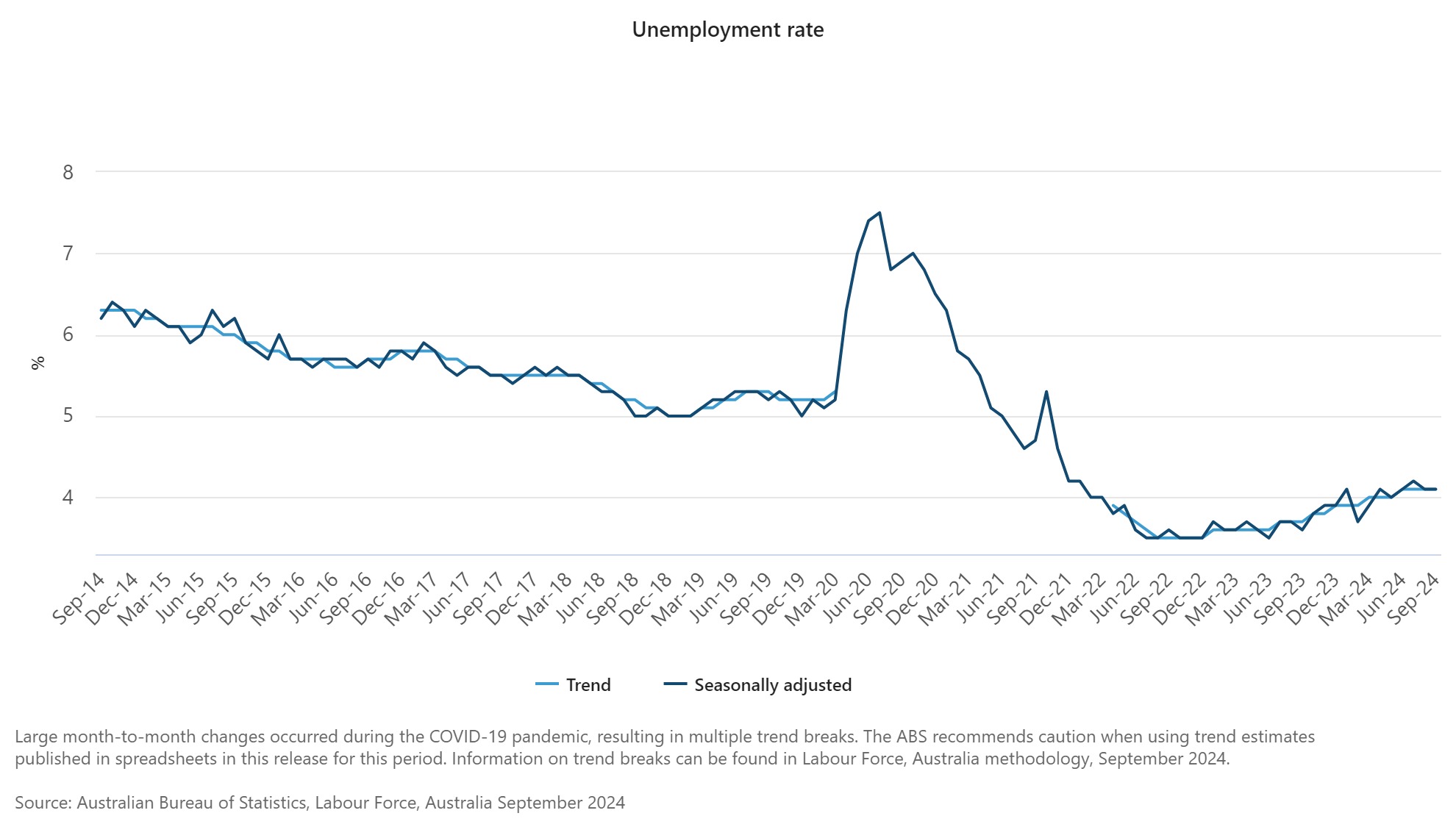
'Employment has risen by 3.1%, growing faster than population growth of 2.5%'

The unemployment rate held steady at 4.1% in September, according to data released by the Australian Bureau of Statistics (ABS) on Thursday.
“With employment rising by around 64,000 people and the number of unemployed falling around 9,000, the unemployment rate remained at 4.1%, where it has generally been over the past six months,” said ABS head of labour statistics Bjorn Jarvis.
The participation rate reached 67.2%, from 67.1% in August.

“Employment has risen by 3.1% in the past year, growing faster than the civilian population growth of 2.5%. This has contributed to the increase in the employment-to-population ratio by 0.1 percentage point, and 0.4 percentage points over the past year, to a new historical high of 64.4%,” Jarvis said in a statement.
While the number of unemployed people fell slightly to 616,000 in September, overall the number of unemployed people has risen by around 90,000 since September 2023.
“Despite this rise over the last year, there are still around 93,000 fewer unemployed people than there were just before the start of the COVID-19 pandemic, when the unemployment rate was at 5.2 per cent,” he said.
Unemployment was lowest in the Australian Capital Territory, at 3.5%. Victoria recorded the highest level for the month, at 4.4%.
Australia’s other states and territories recorded the following unemployment rates:
Meanwhile, monthly hours worked, seasonally adjusted, increased by 0.3% in September, lagging the 0.4% rise in employment. The underemployment rate fell by 0.2%, to 6.3% in September.
“The trend employment and participation measures are at an all-time high, while unemployment and underemployment measures are still low, especially compared with what we saw before the pandemic. This suggests the labour market continues to be relatively tight,” Jarvis said.
The underutilisation rate, which combines the unemployment and underemployment rates, fell 0.2 percentage points to 10.4%. This remained well below the 13.9% recorded in March 2020.